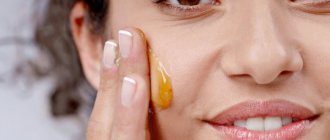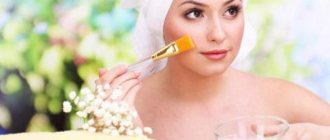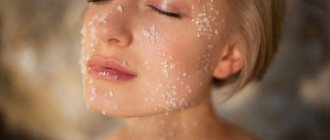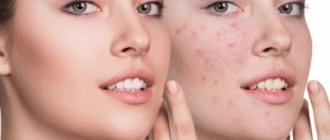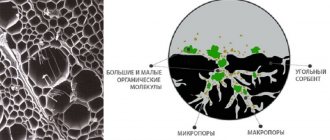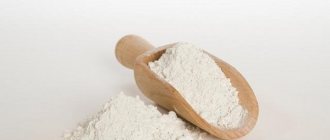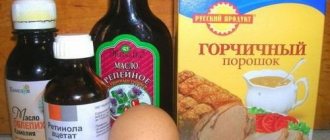Adolescence is marked by hormonal changes that affect the condition of the skin. If you do not deal with facial problems at an early stage, inflammation and acne will occur in later years. Cosmetic masks for teenagers will help you cope with them. They provide tissue cells with minerals, vitamins, regulate the activity of the sebaceous glands, and cope with acne. Proper care will help restore your skin to a healthy and fresh appearance. In the absence of such procedures, the pores become clogged with grease and dirt, which leads to new inflammation and the appearance of acne. Masks can be prepared at home with the addition of essential oils, fruit pulp, activated carbon, honey, and herbal decoctions.
Differences between masks for teenagers
The choice of skin care products for a teenager depends on the problems. The compositions of the masks differ if it is necessary to remove acne or blackheads. Teenagers often suffer from dry and oily seborrhea, in which case the components of the masks are not the same.
Features of masks for teenagers:
- For dry seborrhea, you should not use masks containing alcohol or vodka.
- For acne and blackheads, the mask should be light and contain a minimum of oils and fats
- Medicinal herbs are used only in the absence of allergies
- Masks for adults and teenagers are radically different
- Most often, products for youth contain substances that narrow pores and have an antimicrobial effect.
- Masks soothe the skin and relieve inflammation
How to supplement external treatment
Juvenile acne affects 80% of teenagers. They arise due to hormonal changes in the body that affect the functioning of the sebaceous glands. When follicles are clogged with sebum, conditions arise for the proliferation of bacteria that cause purulent inflammation. To cope with the problem, external therapy is supplemented with oral medications:
- antibiotics (Limecycline, Erythromycin, Josamycin) – destroy pathogenic bacteria in the skin, relieving inflammation;
- retinoids (Acnecutane, Isotretinoin, Roaccutane) – restore skin regeneration processes, suppress sebum secretion, relieve inflammation and prevent the formation of acne;
- antiandrogens (Cyproterone, Progestin, Flutamide) - reduce the content of male hormones that provoke acne.
If anti-acne masks and other local remedies are ineffective, hormonal drugs are used. They suppress inflammation, improving the condition of teenage skin. But you should use pharmaceutical products to treat acne only on the recommendation of a dermatologist. Overuse of medications can lead to decreased immunity and even greater skin inflammation.
Cleansing face masks for teenagers against blackheads
Cleansing masks may contain blue or black clay, chicken protein and antibiotics. Alcohol and salicylic acid are often added to masks.
Blackheads are debris in the pores that accumulate due to excessive sebum production. If comedones are not removed, this will lead to the formation of ulcers and acne.
Recipes for masks against blackheads:
- With protein. Take an aloe leaf. The plant must be at least 3 years old. Peel the leaves and grind in a blender. Add a spoonful of lemon juice and set aside. In a separate bowl, beat the egg white and pour the vegetable liquid into it. Average and apply for a quarter of an hour all over the face. Wash with warm water and soap
- With rice. It is an astringent that absorbs sebum. Pour 500 ml of boiling water over a glass of cereal and leave overnight. In the morning, puree the porridge and apply to the skin, application time 20 minutes
- With cereal . Grind oatmeal into flour and pour kefir over it. Leave for 10 minutes. It is necessary for the mass to become viscous. Add a pinch of boric acid. Apply to face, leave for a third of an hour
Features of application
Face masks for teenagers will be most beneficial if used correctly at home:
- Any mask must be tested (description above).
- It is recommended to perform the procedure twice - three times a week.
- Apply only to skin that has been steamed using a hot or steam bath.
- Before the procedure, you can use a gentle cleansing scrub.
- The mask must be prepared strictly according to the chosen recipe; it is not recommended to change the dosage or mix the compositions of different masks with each other.
- The procedure time is no more than 15 - 20 minutes.
- The components included in the composition must be natural and fresh. It is better to use homemade eggs and dairy products, and fruits, vegetables, and herbs grown without the use of chemicals.
- It is best to wash off the mixture with water at room temperature or cool.
Homemade acne masks for teenagers
Acne masks often contain antibacterial components. These are salicylic acid, zinc ointment and calendula tincture.
Acne mask recipes for teenagers:
- Yogurt. You need homemade yogurt. It must be mixed with coffee grounds and applied in a thick layer to the face. The mixture is kept for a third of an hour and washed off, massaging the skin.
- With pineapple . Mash the pulp of fresh or canned pineapple with a fork and pour in a little lemon juice. This fruit pulp must be placed on cheesecloth. Place tissue pieces with fruit on your face. Applications should be on the skin for 15 minutes
- With tomato . Pour boiling water over the vegetable and remove the skin. Grind the pulp to a puree, add a few drops of tea tree oil. Apply the mixture in a thick layer to problem areas for a third of an hour.
Tips for caring for oily skin
If your skin is too oily, we recommend that you take more care of it. The tips below will help:
- Don't overeat junk food. Fast food and fried foods cause skin problems. Acne often appears due to problems with the functioning of the stomach.
- Don't work on the computer too much. Monitors dry out the skin, irritate it and cause flaking.
- Choose your cosmetics wisely . If creams are not suitable for your skin type, then problems and rashes begin.
- Wash off your makeup. You shouldn't go to bed with makeup on - your skin should rest.
Useful masks for teenage skin with chamomile
Chamomile is a well-known medicinal plant that is used to treat internal organs and skin ailments. Masks with chamomile are successfully used in the treatment of pimples and acne.
Recipes for masks with chamomile:
- Brew a strong chamomile decoction. Peel the aloe and chop the pulp. Pour a spoonful of chamomile infusion into the puree and add a spoonful of mashed potatoes. Spread the thick mixture evenly on your face. Exposure time 15 minutes
- Prepare a mixture of baking soda and fine salt. The ingredients are mixed in a 1:1 ratio. Take a piece of baby soap, moisten a washcloth with chamomile infusion and rub it on the soap. Add the resulting foam to the dry mass until you get a paste. Apply to skin for 3-10 minutes. If it burns too much, wash off the composition immediately.
- Mix honey, wheat flour and chamomile decoction in equal quantities. Apply the resulting batter onto your face using a brush. Keep it for a third of an hour
Type of acne
Acne appears on the face in different ways, treatment depends entirely on its type:
- Closed - clogged pores, have a whitish, convex appearance, remain on the skin for quite a long time. Inflammation does not occur; they appear and disappear on their own. More often they appear in the forehead and chin area.
- Open – these include blackheads. As a rule, the pores are enlarged, dirt and fat penetrate there and settle, for this reason the pimple has a dark color.
- Papules are an inflamed area with red raised areas. There is no pus inside. They can dry out in a few days, or they can turn into a pustule.
- Pustules are inflamed areas that have a cavity inside that is filled with pus. They are soft and painful to the touch. May leave scars.
- The nodes are hard to the touch, inflamed, painful. There is no pus inside. They last quite a long time, gradually dissolve and decrease in size.
- Cysts are a combination of several pustules into one whole, they have several abscesses, the color changes from red to bluish. New pimples can form inside them, so they take a long time to disappear. Quite often, scars remain in their place.
Masks for teenagers with potatoes
Potatoes contain starch, which is an adsorbent for excess sebum. The root vegetable can be used raw or boiled.
Recipes for masks with potatoes for teenagers:
- Grate the peeled potatoes and apply the porridge to dry skin. Leave for a third of an hour
- Prepare mashed potatoes. To do this, boil the vegetable and crush it. No need to add oil. Add the yolk and a little olive oil. Application time is half an hour
- Prepare regular puree and add a little beer, lemon juice and kefir to it. Apply the mixture in a thick layer to problem areas for a quarter of an hour.
What to pay attention to
When choosing a mask option, you need to take into account the characteristics of your skin. For example, people with dry skin are well suited for products based on vegetable oils or animal fats.
When performing procedures, certain nuances must be observed:
- Apply products only to cleansed skin. It is recommended to steam your face before the procedure; the pores should be open. Only in this case will the effectiveness be noticeable.
- If the suppuration is very strong and spreads over a large area, you should not self-medicate. In such cases, it is best to consult a doctor first and use only prescribed medications.
- Not all components can be well tolerated by the body. Before applying the mask to the damaged area, it is best to conduct a sensitivity test. To do this, apply a small amount of the product to the inside of the elbow. The reaction must be observed within two hours. If redness does not appear, the mask can be used on the inflamed area.
Before and after the procedure, you should not squeeze pimples. This may lead to the spread of infection.
Masks for teenagers with honey
Honey is a well-known remedy that copes well with acne, comedones and suppuration. It is often used in the preparation of formulations for the treatment of teenage acne.
Masks with honey for acne:
- Crush an aspirin tablet into powder and add a spoonful of warm bee nectar. Pour in 10 ml lemon juice. Soak gauze with the mixture and apply the resulting applications to problem areas. Keep it for half an hour
- Mix cinnamon powder with heated honey. It is necessary to make porridge. Apply the mixture onto your face using a brush. Leave for a third of an hour
- Grind oat flakes to a powder. Mix flour and honey until a thick mixture is obtained. Apply a thick layer to your face and leave for a third of an hour. At the end, when rinsing, massage problem areas
Masks for teenagers with clay
Clay is an effective remedy with minerals for healing teenage skin. It contains kaolin, silicon and calcium. These minerals push oil out of the pores and reduce inflammation.
Clay masks for problem skin:
- With green clay . Take clay powder and add some water to it. Add a spoonful of glycerin and some crushed coffee beans. Apply a thick layer to your face. Exposure time 10 minutes
- With white clay . Dilute white clay powder with milk and add 20 g of crushed flaxseeds. Apply the mixture to the skin for a third of an hour. Rub with a dry cotton pad and then rinse off
- With zinc . Dilute blue clay with water until you get porridge. Add a little talc and 2 g of zinc oxide. This substance removes inflammation and redness. Keep the mask on for 20 minutes, rinse with warm water
Store-bought masks for teenagers
There are a lot of masks for teenagers on the market and in cosmetics stores. There are entire lines dedicated to the care of teenage skin. They contain zinc oxide, clay, algae, fruit and inorganic acids.
List of masks for problem skin:
- Garenier Clean skin . The series contains clay and ground apricot kernels
- Clean line . The masks contain oak bark and chamomile decoction.
- Mia . This is a line for problematic and young skin. Products for the care of problem skin contain scrubbing components
- Avon . Special series with tea tree. The series includes a film mask. After drying, it is removed in an unbroken layer, drawing out impurities from the pores.
It is important which method of caring for problem skin you choose. It is best to seek help from a dermatologist; he will choose a line that is suitable specifically for your skin.
All unsuccessful? It's time to see a doctor!
It happens that with proper care, diet and lifestyle, acne does not even think of disappearing. This may indicate that the problem lies deeper. In this case, your doctor will help you understand the causes of acne. Only a specialist will find out what causes acne: mites, skin diseases, disruptions in the endocrine system and hormonal levels. Once the cause is identified, effective treatment can begin.
A dermatologist is the first doctor you should contact. He will identify existing skin problems and diseases, select care and treatment procedures.
Gastroenterologist - solves problems in the digestive tract, the presence of which can provoke the occurrence of acne.
Endocrinologist – hormonal imbalance is one of the most common causes of acne in adolescence. The doctor will determine which hormones are elevated and offer a solution.
Gynecologist – it makes sense for girls to visit a gynecologist, since acne can be a consequence of gynecological diseases, such as polycystic ovary syndrome.
